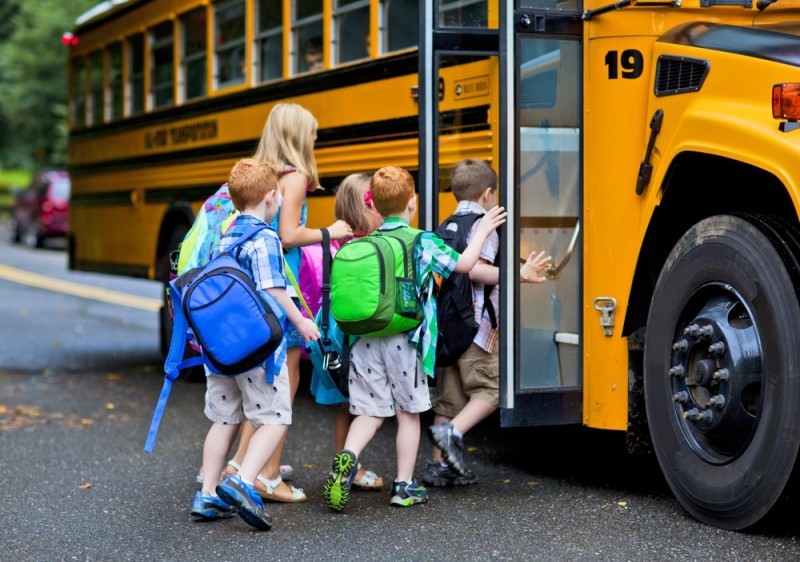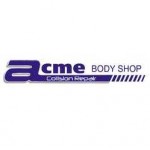Is Your Child Safe on a School Bus?

It's the same concern that any parent has about their school-age children. Every weekday, we send our kids to school via a school bus or van, and our main question will always be the same—is it safe? Parents trust in these vehicles to transport their precius cargo, but how do we truly know that they are safe and reliable?
Did you know that American students are nearly eight times safer riding in a school bus than with their own parents and guardians in cars? The fatality rate for school buses is only 0.2 fatalities per 100 million vehicle miles traveled (VMT) compared to 1.5 fatalities per 100 million VMT for cars. This impressive safety record is a result of the Department of Transportation's (DOT) requirements for compartmentalization on large school buses, and lap belts plus compartmentalization on small school buses. Moreover, the protective abilities of today's school buses have been reaffirmed by two years of research.
At Acme Body Shop in Great Falls, MT, we too are concerned about school bus safety, so we've done our research on the subject and some of the results might just surprise you.
Are Seat Belts the Right Solution for School Buses?
No matter how safe our children are on school buses, it is crucially important to constantly re-analyze existing safety measures. Therefore, Congress recently requested that DOT investigate the safety value of installing safety belts on our nation's school buses. An analysis of test data by the National Highway Traffic Safety Administration (NHTSA) has concluded that lap belts appear to have little, if any, benefit in reducing serious-to-fatal injuries in severe frontal crashes.
On the contrary, lap belts could increase the incidence of serious neck injuries and possibly abdominal injury among young passengers in severe frontal crashes. Any increased risks associated with the use of lap belts in small school buses are more than offset by preventing ejections. The use of the combination lap/shoulder belts could provide some benefit, unless misused. Lap/shoulder belts can be misused and NHTSA's testing showed that serious neck injury and perhaps abdominal injury could result when lap/shoulder belts are misused.
 Still the Safest Way to Go to School
Still the Safest Way to Go to School
Other considerations, such as increased capital costs, reduced seating capacities, and other unintended consequences associated with lap/shoulder belts could result in more children seeking optional means of traveling to and from school. Given that school buses are the safest way to and from school, even the smallest decline in the number of bus riders could result in more children being killed or injured when using alternative forms of transportation.
Over the past 11 years, school buses have annually averaged about 26,000 crashes resulting in 10 deaths. (25 percent were drivers; 75 percent were passengers.) Frontal crashes account for about two passenger deaths each year. Meanwhile, NHTSA is continuing its research program, focusing on side impact protection by working with university-based researchers.
School Bus Safety Tips for Parents and Kids
- Walk with your kids to the bus stop and wait with them until it gets there. Tell kids to stand at least three giant steps back from the curb as the bus drives up and board the bus one at a time.
- Instruct kids to wait for the bus to come to a complete stop before getting off and never to walk behind the bus.
- If your child needs to cross the street upon disembarking from the bus, he or she should take five large steps in front of the bus, make eye contact with the bus driver and cross when the driver signal that it’s safe. Educate kids about looking left, right and left again before crossing the street.
- Train younger kids to use handrails when boarding or exiting the bus. Be careful of straps or drawstrings that could get caught in the door. If your children drop something, they should tell the bus driver and make sure the bus driver is able to see them before they pick it up.
- Drivers should always follow the speed limit and slow down in school zones and near bus stops. Remember to stay alert and look for kids who may be trying to get to or from the school bus.
- Slow down and stop if you’re driving near a school bus that is flashing yellow or red lights. This means the bus is either preparing to stop (yellow) or already stopped (red) and children are getting on or off.
It’s not easy for any parent to put their children's welfare in someone else’s hands. But by being careful and wary and teaching your children to be the same, school buses are a safe, reputable and convenient way to get your most prized possessions to and from school. This information has been brought to you from Acme Body Shop in Great Falls.








 Still the Safest Way to Go to School
Still the Safest Way to Go to School
Social